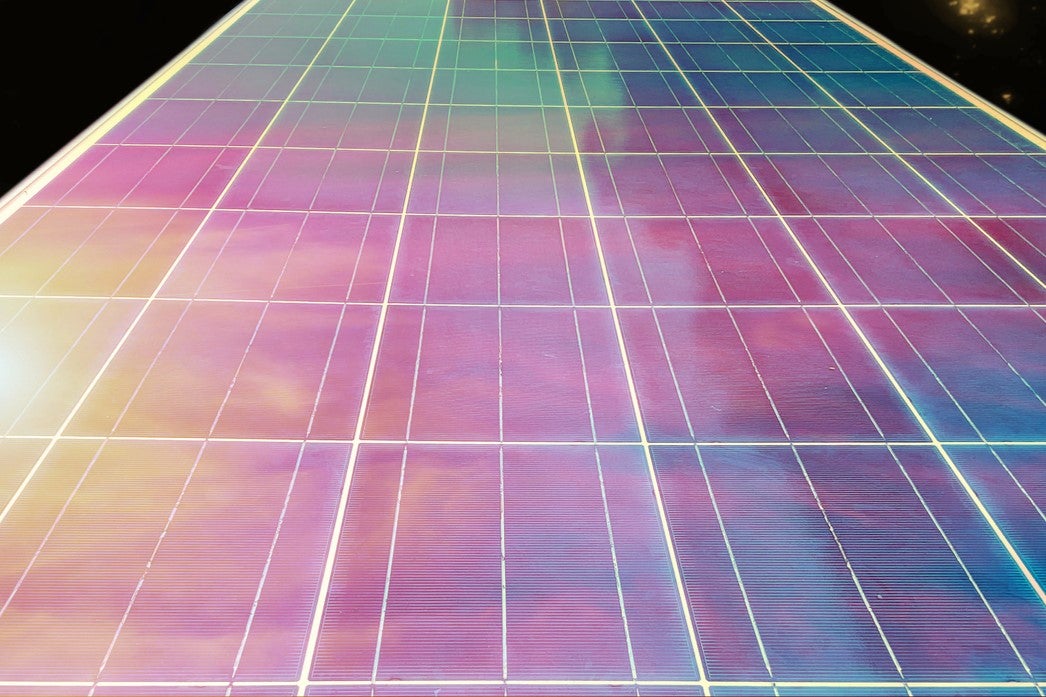Solar panel breakthrough harnesses wasted light to boost efficiency
Transparent layer converts UV to visible light, while also providing protection for the solar cell

Your support helps us to tell the story
From reproductive rights to climate change to Big Tech, The Independent is on the ground when the story is developing. Whether it's investigating the financials of Elon Musk's pro-Trump PAC or producing our latest documentary, 'The A Word', which shines a light on the American women fighting for reproductive rights, we know how important it is to parse out the facts from the messaging.
At such a critical moment in US history, we need reporters on the ground. Your donation allows us to keep sending journalists to speak to both sides of the story.
The Independent is trusted by Americans across the entire political spectrum. And unlike many other quality news outlets, we choose not to lock Americans out of our reporting and analysis with paywalls. We believe quality journalism should be available to everyone, paid for by those who can afford it.
Your support makes all the difference.Scientists have discovered a way to significantly boost the efficiency of solar panels by harnessing previously unused parts of the light spectrum.
A team from Shanghai University of Engineering Science in China found that a glass-ceramic material could be placed over solar cells as a transparent layer in order to convert ultraviolet (UV) light into visible light.
The material has the added benefit of providing a layer of protection for next-generation perovskite cells that suffer from degradation under strong light.
“With potential applications in both terrestrial and space photovoltaic cells, the development of spectral downshifting co-doped glass-ceramics might open up new avenues to achieve better performance in photovoltaic devices,” said Pei Song from Shanghai University of Engineering Science.
The new material, referred to as GdPO4-GC:Eu3+/Pr3+, can be easily synthesised within a lab, according to the researchers, unlike methods for spectral conversion that have previously been proposed.
The team said their findings could be used to not only improve efficiency of solar panels, but also provide a protective layer for photovoltaic cells used in space.
“Nowadays, expanding space stations require more power support and need high-performance photovoltaic cells,” said Dr Song.
“By covering the top side of a photovoltaic cell with the proposed spectral spectral conversion material and using appropriate encapsulation and sealing technology, we can ensure very low humidity levels and efficient UV recycling. In addition, glass-ceramic materials have a hard texture, so they can protect photovoltaic cells from being hit by tiny floating debris in space.”
More research is needed in order to improve the cost effectiveness of the material and to fully understand which thickness provides the most efficiency.
The research was detailed in the Journal of Photonics for Energy, in a study titled ‘Ultra-violet wavelength driven solar spectral converter for photovoltaic cell application’.

Join our commenting forum
Join thought-provoking conversations, follow other Independent readers and see their replies
Comments